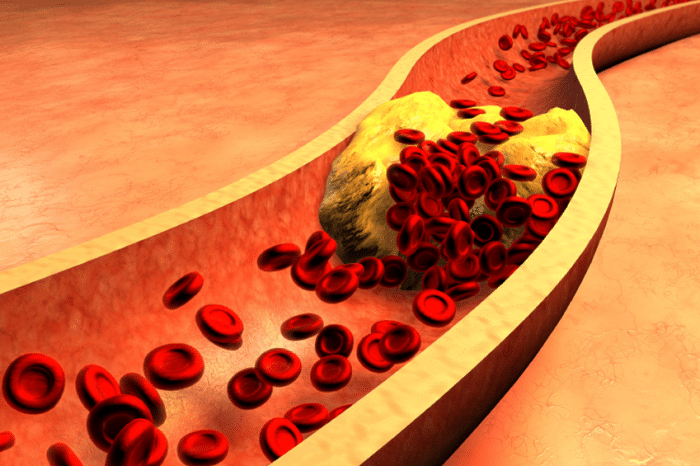Hyperlipidemia, specifically type E78.5, is a medical condition characterized by abnormal levels of lipids (fats) in the blood. This condition can significantly impact cardiovascular health and requires careful management and treatment. In this comprehensive guide, we will delve into the details of hyperlipidemia type E78.5, including its causes, symptoms, diagnosis, treatment options, and lifestyle modifications.
What Is Hyperlipidemia Type E78.5?
Hyperlipidemia is a term used to describe elevated levels of lipids in the blood, including cholesterol and triglycerides. Type E78.5 refers to a specific type of hyperlipidemia classified under the International Classification of Diseases (ICD) coding system. It is important to note that hyperlipidemia can be further categorized into different types based on the specific lipid abnormalities observed.
Causes of Hyperlipidemia Type E78.5
Hyperlipidemia type E78.5 can have various underlying causes, contributing to the abnormal lipid levels in the blood. These causes may include:
1. Genetic Factors: Inherited genetic mutations can lead to abnormalities in lipid metabolism, resulting in hyperlipidemia.
2. Dietary Habits: Consuming a diet high in saturated fats, trans fats, cholesterol, and refined sugars can contribute to elevated lipid levels.
3. Obesity: Excess body weight, particularly central obesity (abdominal fat), is associated with higher levels of triglycerides and LDL cholesterol.
4. Lack of Physical Activity: Sedentary lifestyle habits can lead to imbalances in lipid metabolism and contribute to hyperlipidemia.
5. Medical Conditions: Certain medical conditions such as diabetes, hypothyroidism, and kidney disease can affect lipid levels.
6. Medications: Some medications, such as certain types of antipsychotics and steroids, may increase lipid levels as a side effect.
Symptoms of Hyperlipidemia Type E78.5
Hyperlipidemia type E78.5 often does not cause noticeable symptoms in its early stages. However, as lipid levels continue to rise, individuals may experience symptoms related to cardiovascular complications. These symptoms may include:
1. Chest Pain: Angina or chest pain may occur due to reduced blood flow to the heart muscles caused by narrowed arteries (atherosclerosis).
2. Shortness of Breath: Reduced oxygen supply to the heart due to narrowed arteries can lead to shortness of breath, especially during physical exertion.
3. Peripheral Artery Disease (PAD): Reduced blood flow to the extremities can cause symptoms such as leg pain, cramping, and slow wound healing.
4. Xanthomas: These are fatty deposits that may appear as yellowish bumps on the skin, commonly around the eyelids, elbows, knees, and buttocks.
5. Xanthelasma: Yellowish cholesterol deposits may also form on the eyelids, known as xanthelasma.
It is essential to note that hyperlipidemia type E78.5 is often diagnosed through blood tests measuring lipid levels rather than based on symptoms alone.
Diagnosis of Hyperlipidemia Type E78.5
The diagnosis of hyperlipidemia type E78.5 involves several steps:
1. Lipid Profile Test: A lipid profile blood test measures levels of total cholesterol, LDL cholesterol, HDL cholesterol, and triglycerides.
2. Physical Examination: A healthcare provider may perform a physical exam to assess for signs such as xanthomas or xanthelasma.
3. Medical History: Gathering information about family history, dietary habits, lifestyle factors, and any existing medical conditions is crucial for diagnosis.
4. Additional Tests: In some cases, additional tests such as a coronary calcium scan or carotid ultrasound may be recommended to assess cardiovascular risk.
Treatment Options for Hyperlipidemia Type E78.5
The management of hyperlipidemia type E78.5 aims to reduce lipid levels and minimize the risk of cardiovascular complications. Treatment options may include:
1. Lifestyle Modifications: Adopting a heart-healthy diet low in saturated fats, trans fats, and cholesterol, increasing physical activity, and maintaining a healthy weight are crucial.
2. Medications: Depending on the severity of hyperlipidemia and individual risk factors, medications such as statins, fibrates, niacin, or cholesterol absorption inhibitors may be prescribed.
3. Monitoring and Follow-Up: Regular monitoring of lipid levels and follow-up appointments with healthcare providers are essential to assess treatment effectiveness and make adjustments as needed.
4. Risk Factor Management: Managing other cardiovascular risk factors such as hypertension, diabetes, and smoking cessation is integral to overall heart health.
Prevention Strategies
Preventing hyperlipidemia type E78.5 and its associated complications involves proactive measures:
1. Healthy Diet: Emphasize a diet rich in fruits, vegetables, whole grains, lean proteins, and healthy fats such as those found in fish, nuts, and olive oil.
2. Regular Exercise: Engage in regular physical activity to maintain a healthy weight, improve lipid metabolism, and support cardiovascular health.
3. Avoid Smoking: Quitting smoking and avoiding exposure to secondhand smoke can significantly reduce cardiovascular risk.
4. Manage Stress: Practice stress-reducing techniques such as meditation, yoga, or deep breathing exercises to promote overall well-being.
5. Routine Health Check-ups: Regular visits to healthcare providers for preventive screenings and health assessments are important for early detection and management of risk factors.
Conclusion
Hyperlipidemia type E78.5 is a condition characterized by abnormal lipid levels in the blood, posing significant risks to cardiovascular health. Understanding the causes, symptoms, diagnosis, treatment options, and prevention strategies is crucial for effective management and reducing the risk of cardiovascular complications associated with hyperlipidemia. By adopting a holistic approach that combines lifestyle modifications, medications as needed, regular monitoring, and preventive measures, individuals can take proactive steps towards maintaining heart health and overall well-being.


